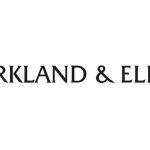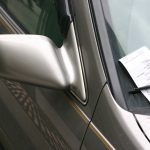If you were in an accident and were not at fault, you may be wondering how it will affect your insurance premiums. This is a common concern, and understanding the impact of a not-at-fault accident on your insurance in California can help you prepare for potential changes.
California operates under a comparative negligence system, meaning drivers can share some of the liability for causing an accident. As long as you are not at fault, your insurance rates should not increase after an accident. However, keep in mind that even if the accident was not your fault, your insurance rate may still go up depending on the situation, your history of making claims, and the type of insurance coverage you have.
If you or a loved one has been involved in a car accident that resulted in a personal injury, it's crucial to contact a law firm to discuss your legal options. Navigating the insurance process can be complex and stressful, but understanding the potential impact on your insurance rates and seeking professional advice can help you make informed decisions moving forward.
Understanding Fault in Car Insurance Claims
In the event of a car accident, determining who is at fault is crucial for calculating insurance payouts and premium adjustments. In California, the fault determination process follows a Comparative Negligence System. This section will discuss California's comparative negligence system and how fault is determined after an accident.
California's Comparative Negligence System
California operates under a comparative negligence system which takes into account the degree of fault or negligence of each party involved in the accident. In this system, the compensation awarded to the claimant is reduced by their percentage of fault. For example, if a driver is found to be 30% at fault, their compensation will be reduced by 30%.
- Pure Comparative Negligence: California follows a pure comparative negligence model, meaning that a claimant can recover damages even if they are 99% at fault.
- Apportioning Fault: Insurance companies review evidence from the accident to assign percentages of fault to all parties involved.
Determining Fault after an Accident
To establish fault in a car accident, a thorough investigation is often conducted by insurance companies. Various factors are considered, including the police report, witness statements, and any other relevant evidence.
- Police Report: The police report is an essential document that provides an official account of the accident, including details of the scene, parties involved, and potential traffic law violations.
- Witness Statements: Statements from witnesses can help clarify the events leading up to the accident, as well as corroborate or contest the accounts provided by involved parties.
- Physical Evidence: Photos, videos, and any available technological data (e.g., from dashcams or smartphones) play a significant role in the fault determination process.
Ultimately, it is the responsibility of the insurance companies to analyze the gathered data to assign fault. California's comparative negligence system ensures that each party is held accountable for their actions and that the compensation for damages is adjusted accordingly.
How Non-Fault Accidents Affect Insurance Rates
Insurance Rate Calculations and Accident Forgiveness
Insurance rates are calculated based on various factors, such as the policyholder's driving record, vehicle, location, and the number of claims made. After a no-fault accident or a not-at-fault accident, your insurance premium can increase. The rate increase may depend on your insurer's policies and your claims history.
Some insurance providers offer accident forgiveness programs that can prevent your premium from increasing after a not-at-fault accident. These programs typically require a clean driving record and no prior claims to qualify. It is crucial to familiarize yourself with your insurance provider's policies regarding accident forgiveness and premium increases.
When to Contact an Attorney
If you believe your insurance rate has been unfairly increased following a not-at-fault accident, you may want to consult with an attorney who specializes in insurance law. In cases where there is a disagreement between you and your insurance provider, or where you believe your rights as a policyholder have been violated, an attorney can help you navigate the legal process.
Additionally, the Consumer Federation of America offers resources for understanding insurance laws and regulations in California and can guide you in finding a qualified attorney if needed.
Shopping Around for the Best Rates
In the event of a rate increase after a not-at-fault accident, it's essential to compare rates and shop around for the best possible options. Reach out to multiple insurance providers, requesting quotes for your specific circumstances. Keep in mind that each insurer may have different methods to calculate premiums and different policies regarding accident forgiveness.
When comparing rates, make sure to evaluate not only the cost but also the coverage and benefits included with the policy. Identifying the best insurance option may require thorough research, but it can ultimately result in substantial savings and peace of mind.
In Conclusion
In most cases, your car insurance rates in California will not go up if the accident was not your fault. However, it's essential to check with your insurer and review the terms of your policy to ensure proper coverage.
When it comes to rate increases after an accident, each state has its average. In California, the average dollar increase is $585, and the average per cent increase is 69%. Factors like the insurance company, who was at fault, driver history, experience, and miles driven can all influence the rate increases.
If you find your insurance rates have increased after a not-at-fault claim, it is wise to shop for a new carrier as new charges are applied on your insurance renewal date. This allows you to have some time between filing and paying for the surcharge.
Lastly, always follow best practices after a car accident in California, such as reporting the accident to authorities, gathering evidence and documentation, and filing an insurance claim promptly. This will help you manage your insurance rates even when an accident is not your fault.








